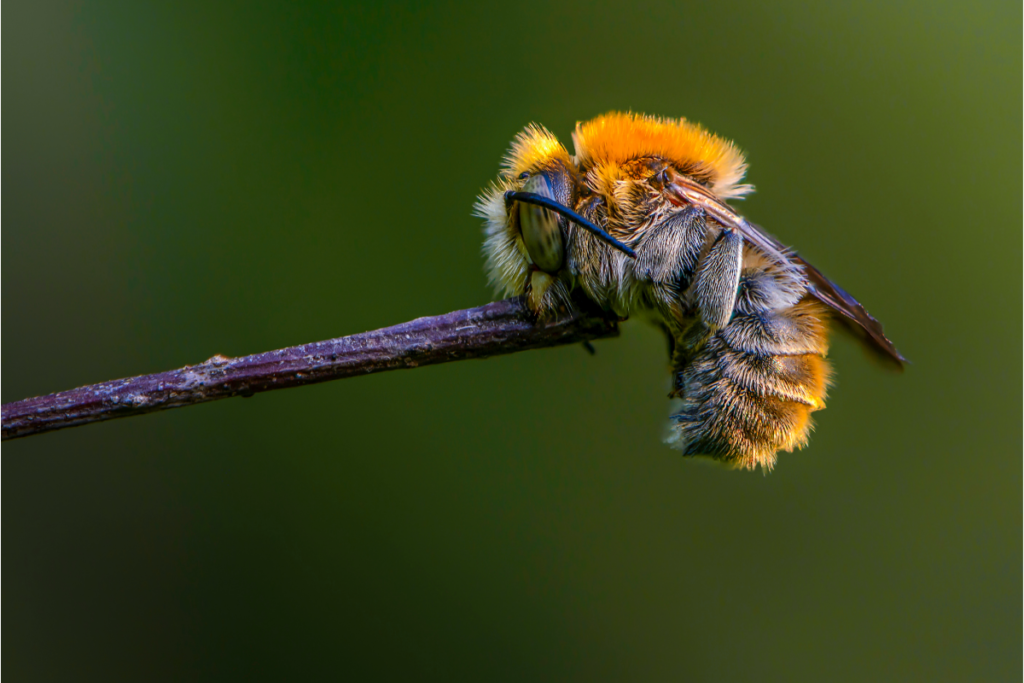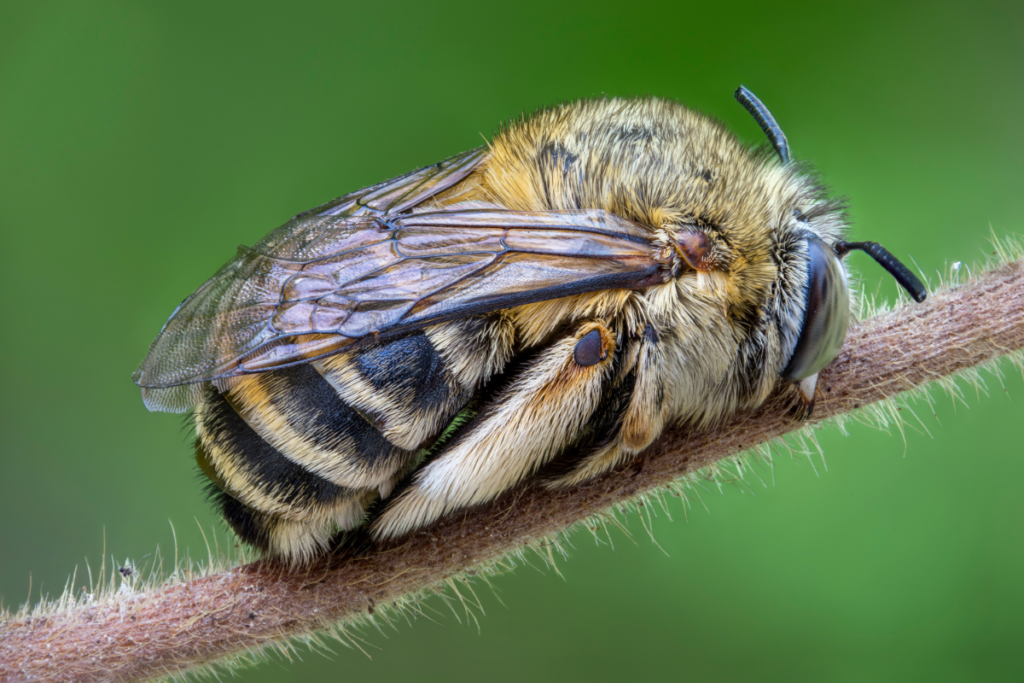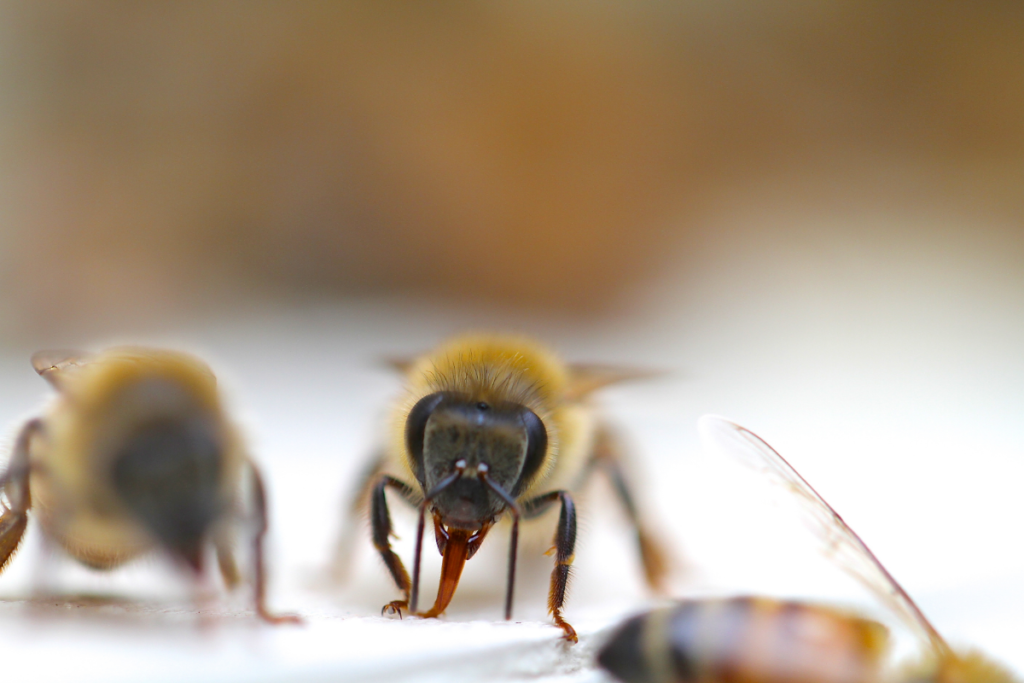Welcome back to the Lab!
Sleep is nearly universal within animals. Though it may present differently between species, everyone needs a rest now and then. Insects are no exception.
Sleep signatures in insects resemble those in other animals. While insects can’t physically get some “shuteye” (hard to do without eyelids), they do enter a state of metabolic rest that science has defined as “sleeping” based on other behavioral cues. The insect will be relatively immobile and difficult to rouse, their temperature may drop, and they will even assume a preferred sleeping posture. I sleep on my side. My dog sleeps on his back. Some insects dangle.

Further investigation into insect sleep reveals that sleeping is just as necessary for insects as it is for us; it plays an important role in memory acquisition and retention in all animals, insects included. This is especially true for social insects like honeybees. Honeybees are model organisms for invertebrate sleep studies, being easy to train and quick to learn, and some of their habits are easily relatable. Caffeine (a morning necessity) is a natural insecticide, but many bees are largely unaffected by small doses and may actively seek a mid-morning pick-me-up. Honeybees will take opportunistic naps in between foraging excursions. Sleep deprived honeybees cannot effectively communicate with their hive, and even have trouble navigating. I don’t know about you, but I have (on more than one occasion) accidentally driven in circles trying to get from point A to B without my morning fix.
But do they dream?

For humans and other mammals (and even birds!), dreaming typically occurs during REM sleep. But, relatively speaking, insect brains are far simpler, not to mention the fact that they lack eyes that are capable of performing the rapid eye movements that typify REM sleep. So intuitively, one might assume that they do not dream.
However, in a 2015 study, researchers wanted to explore memory reactivation in honeybees. Honeybees exhibit what is known as the proboscis extension response, reflexively sticking out their bee-tongues when exposed to certain smells. In the study, researchers exposed the bees to an odor that would elicit this response, while simultaneously exposing them to a thermal stimulus. In the same way that Pavlov’s dogs learned to associate the ringing of a bell with food, the bees learned to associate the thermal stimulus with the odor that triggered their proboscis extension response. This process is known as classical conditioning.

Once the bees were conditioned to this response, they were split into two groups. One group, the control, would be exposed to a neutral odor (in this case, paraffin wax) during a deep sleep state. The experimental group was exposed to the context odor during a deep sleep state. The researchers found that the bees that had been exposed to the context odor performed better in memory retention tests the following day.
Is this evidence of honeybee dreams? In their 2015 paper, Learning and Memory: Do Bees Dream? Melnattur et al. explain, “The data suggest that the existence of replay in deep-sleep indicates that bees might have dream-like experiences analogous to non-REM dreams in humans… if bees do dream it would certainly provide novel insights into the evolution of dreams.”
Until next time, thanks for visiting the lab!
Bug Wrangler Brenna
brenna@missoulabutterflyhouse.org
Want to revisit a previous Notes from the Lab issue? Check out our archive! Do you want to request a subject for an upcoming issue? Email me at the address above and put “Notes from the Lab” in the subject line.